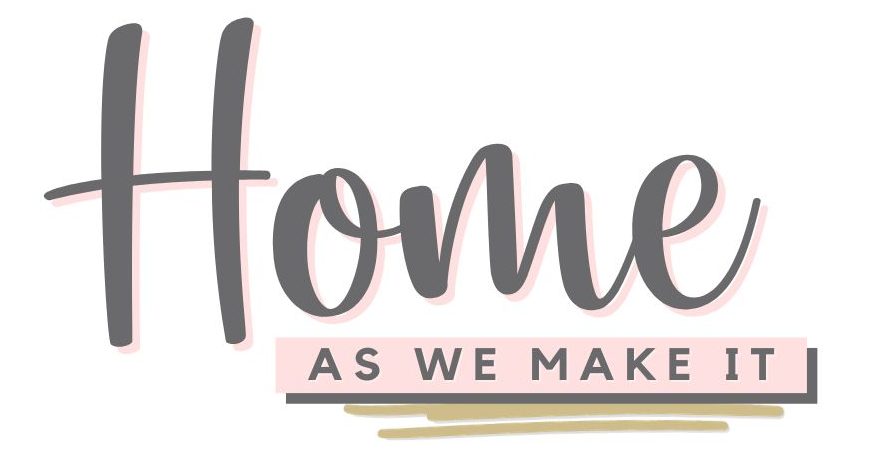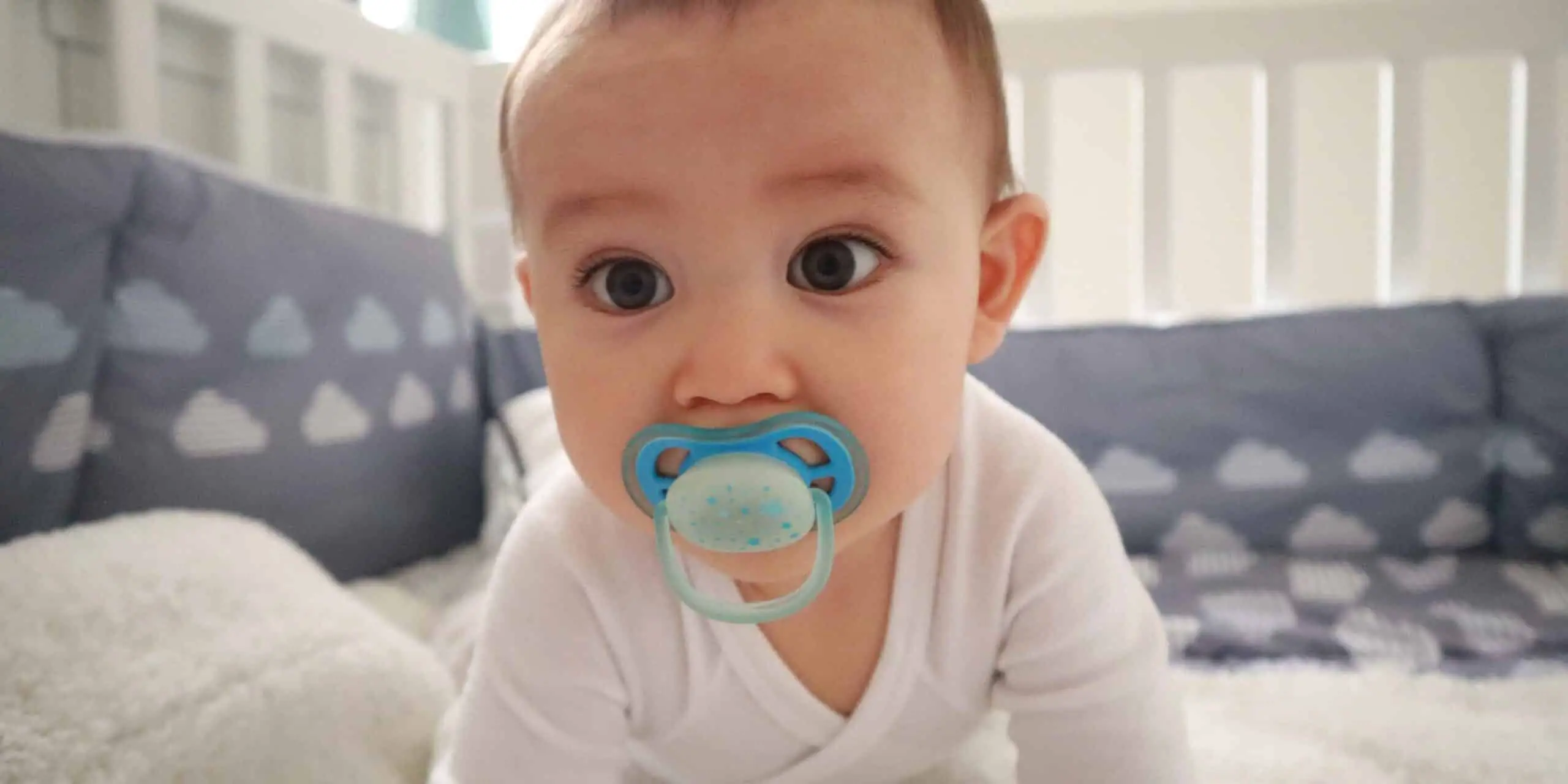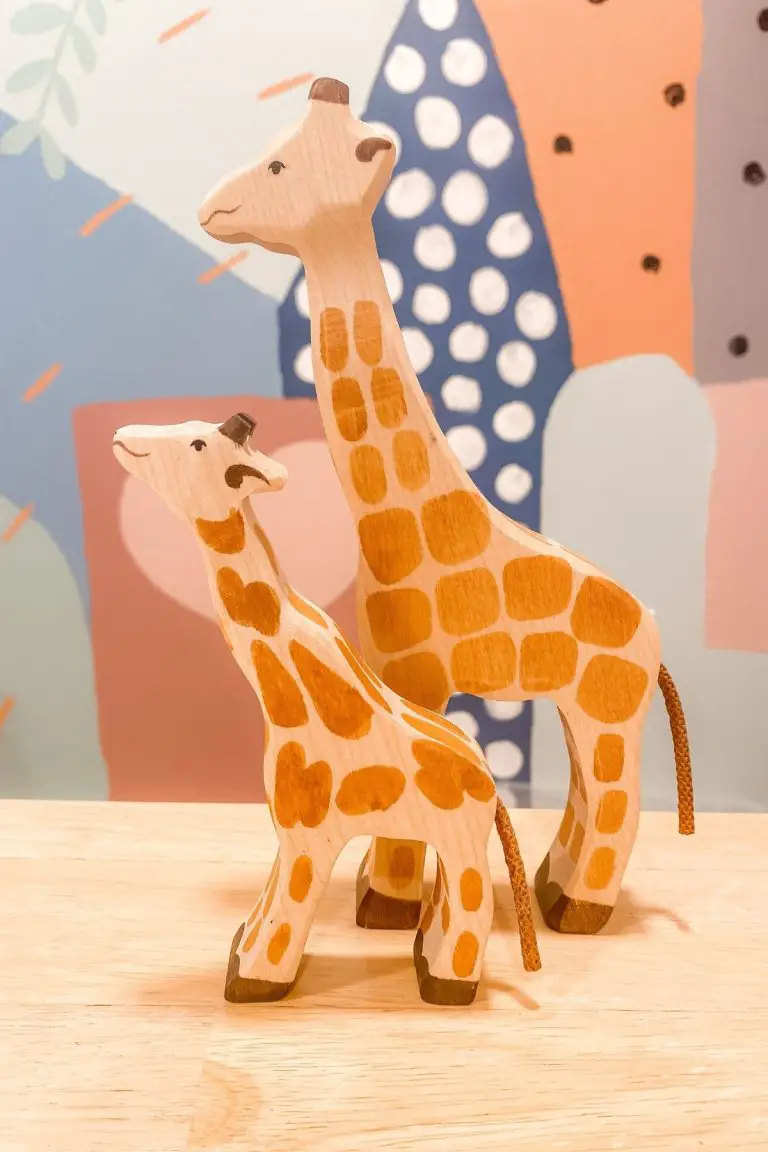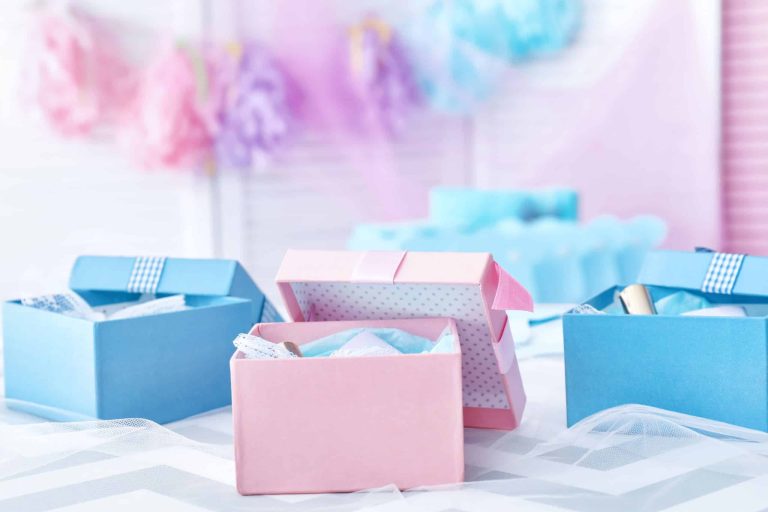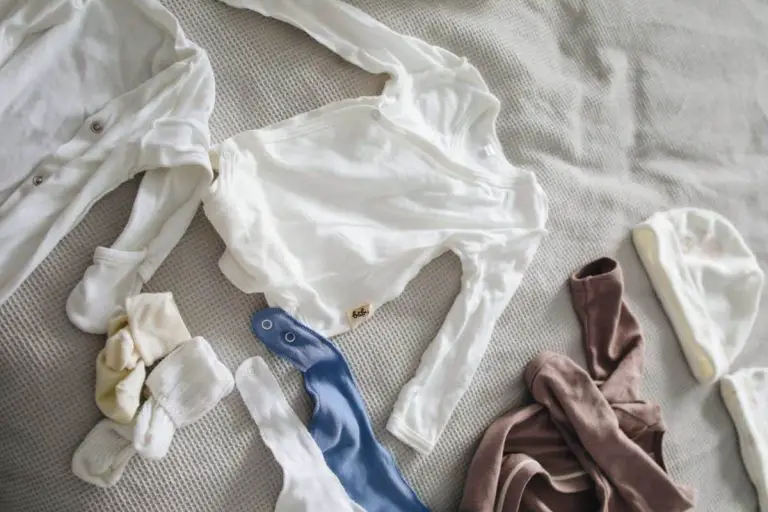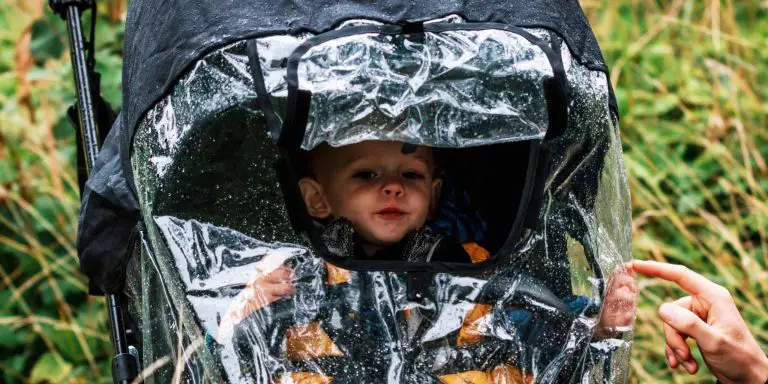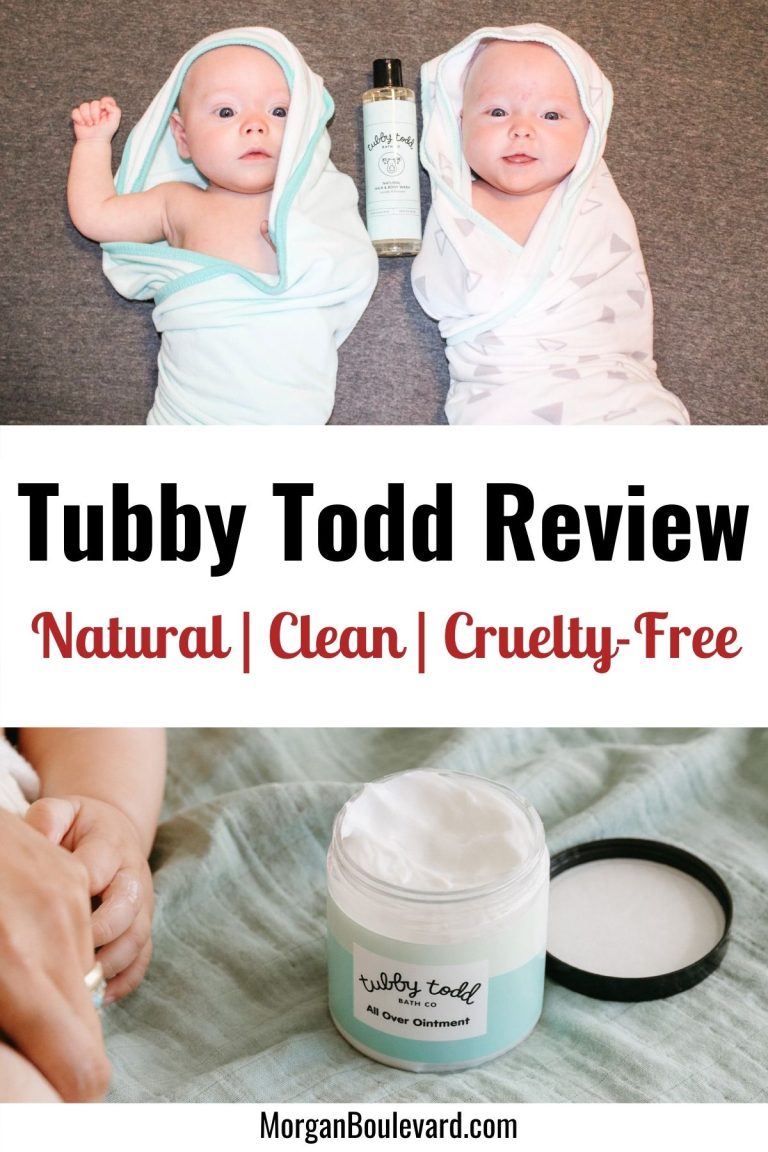The Best Non-Toxic Pacifier for Babies
Are you searching for the best non-toxic pacifier for babies?
Note: This post may contain affiliate links, which means if you buy from my link I might make a small commission. This does not affect the price you pay. See the full affiliate disclosure here.
If that’s a yes, you’re not the only one! When you become a parent, safety is your top priority.
You want to make sure that ALL of the products you introduce to your little one are going to be safe and beneficial for them.
And pacifiers are no exception!
Benefits of choosing a rubber pacifier vs. silicone pacifier
When it comes to pacifiers (aka soothers, binkies, or dummies), parents have two options to choose from: silicone and natural rubber latex, each of which have their own pros and cons.
Silicone pacifiers are particularly popular because they last longer than latex pacifiers, retain their shape better over time, and are more allergy-friendly.
Plus, silicone is odorless and has no weird taste, whereas latex does have that light scent and taste.
But, natural rubber latex has some benefits too.
Since latex is softer than silicone, it resembles Mom’s breast more closely, which can be helpful for breastfeeding moms who are trying to avoid nipple confusion.
This non-toxic material originates from the Hevea Brasiliensi tree, meaning there’s no need to worry about coming into contact with any questionable substances (like chemical softeners).
Rubber pacifiers are better for the environment too since they are biodegradable, making them a great choice for eco-friendly parents.
So, which material is the best when it comes to choosing non-toxic?
Pacifiers made with silicone aren’t a “bad” choice. They can be a good choice depending on what you’re looking for, especially if your baby has a latex allergy or this tends to run in your family.
Since they last longer, they also tend to be less expensive in the long-run.
But- If your main goal is non-toxic and you don’t have any allergy concerns, a rubber pacifier is an excellent option for eco-conscious parents.
Silicone, while it does have its own list of benefits as we discussed, is still a synthetic material.
How to choose the best non-toxic pacifier for your baby
Just as babies have bottle preferences, sometimes they have pacifier preferences too. But this varies from baby to baby.
Some babies are not picky at all while others just love one type of pacifier or another, so you may have to try 2 or 3 different ones to figure out what your own baby prefers.
Here are a few considerations to keep in mind:
Is it orthodontic? This type of pacifier is made in a way that fits the shape of the baby’s mouth better to promote proper development of the jaw and palate.
What size is the pacifier? Pacifier sizes vary so you will need to choose a size that fits your baby’s age.
Sizing Guide:
Small: 0-6 months
Medium: 6-12 months
Large: 12+ months
And, of course, consider the material: As mentioned, there are two main options – silicone and latex. If your goal is to stay as natural as possible and you aren’t worried about a latex allergy, consider one of the rubber pacifiers below!
The best natural rubber pacifiers
Now that you’ve got a handle on the basics, what is the best non-toxic pacifier?
Here are our top picks. These are all made from natural rubber latex.
(If you’ve decided to go with a silicone pacifier instead, there are plenty of parents’ favorites to browse through here.)
1. Natursutten Orthodontic Pacifier

If you’re looking for a safe and non-toxic pacifier, you’ll definitely want to take a look at the Natursutten Orthodontic Pacifiers.
Established in 2006 and created by a mother of three, these pacifiers are made exclusively from natural rubber from Hevea Brasiliensis trees and are BPA-free.
The one-piece design is also easy to clean since dirt cannot accumulate in joints or cracks – just wash it with mild liquid soap under running water once daily.
And, the packaging is eco-friendly as well!
These pacifiers are crafted in Italy and are available in a few different sizes:
- 0-6 months
- 6-12 months
- 12+ months
| Pros | Cons |
|---|---|
| 100% Natural rubber | May have to size up if your baby is used to other pacifier brands |
| One-piece design | Hoop/handle may break easily |
| Orthodontic | |
| Available in multiple sizes |
2. Ecopiggy Orthodontic Pacifier

The Ecopiggy Orthodontic Pacifier is another choice for parents looking for non-toxic pacifiers.
Not only does it promote breastfeeding, but it’s also made from pure rubber sourced in a totally sustainable way. The rubber used to make this pacifier is taken from the Hevea brasillensis tree, which is grown on plantations in Malaysia.
This single-mold design is naturally resistant to sharp teeth and feels soft and comforting against your child’s gums.
Best of all, the Ecopacifier is made without BPA, phthalates, PVC, parabens, and chemical softeners – so you don’t have to worry about any nasties!
Available in two sizes: 0-6 months and 6+ months.
| Pros | Cons |
|---|---|
| 100% Natural rubber | The design is a bit bulky |
| One-piece design | Attracts fuzz easily, so you will need a case/holder |
| Orthodontic | |
| Available in two sizes |
3. NUK for Natureâ„¢ Natural Rubber Pacifier

Next up is the NUK for Natureâ„¢ Natural Rubber Pacifier.
This product is made with 100% sustainable plastic (according to ISCC mass-balance requirements), so you can feel good about doing your part for the environment.
Its soft natural rubber nipple is molded to resemble a breast-like shape, and the heart-shaped shield fits perfectly around the nose to give babies plenty of space to breathe freely.
From newborns to toddlers up to 18 months, NUK Natural Rubber Pacifiers can grow with your child.
These pacifiers are also BPA-free and top-rack dishwasher-safe for easy cleaning.
| Pros | Cons |
|---|---|
| Natural rubber and sustainable plastic | Not the best packaging |
| Top-rack dishwasher safe | Nipple design may be too flat for some babies |
| Orthodontic | |
| Available in two sizes |
The best pacifier clips to pair with your baby’s new soother
Now that you’ve picked out the perfect non-toxic pacifier for your baby, it’s time to make sure it doesn’t get lost!
The best way to keep your baby’s pacifier close by is to attach a pacifier clip, just be sure to never let your baby sleep with a pacifier attached to a clip.
Here are a couple of our favorites:
FAQs
How do pacifiers comfort babies?
Babies are soothed by the physical act of sucking, and the familiar shape of a pacifier helps provide the comfort that babies need when crying or unsettled. The sucking motion is a natural instinct for babies, which helps them feel safe, secure, and calm.
What is the difference between silicone and latex pacifiers?
The primary difference between silicone and latex pacifiers lies in their composition – silicone is a synthetic material made from silica, while latex is made from rubber tree sap.
Are non-toxic pacifiers better for babies?
If you are an eco-friendly parent looking for a natural option for your baby’s pacifier needs, then considering a non-toxic option is the way to go. Non-toxic pacifiers are made from natural rubber latex, rather can silicone.
How do I know if my baby has a latex allergy?
Knowing whether your baby has a latex allergy can be difficult to answer since the signs may start appearing a while after exposure. If your baby has experienced any itching, hives, wheezing, redness, or swelling of the skin after contact with latex products, then this could indicate that they have an allergy. Always check with your doctor if you think your baby has a latex allergy and they will provide advice and guidance on what further steps you should take.
What is the best way to clean non-toxic pacifiers?
It’s always best to refer to the manufacturer’s guidelines when it comes to cleaning pacifiers. Some brands can be cleaned by placing them on the top shelf of your dishwasher. Others need to be hand-washed with milk soap.
How many pacifiers do I need?
When it comes to pacifiers, it’s always a good idea to have a few on hand – at least two or three. This can help to ensure that if one gets dropped in the dirt or lost, you won’t be stuck without a backup right away!
Overall, natural rubber pacifiers are a great choice for parents who are looking for an eco-friendly and non-toxic option.
They provide babies with the same comfort and security as conventional pacifiers. And with three solid options to choose from, you’re sure to find the perfect pacifier for your little one.
